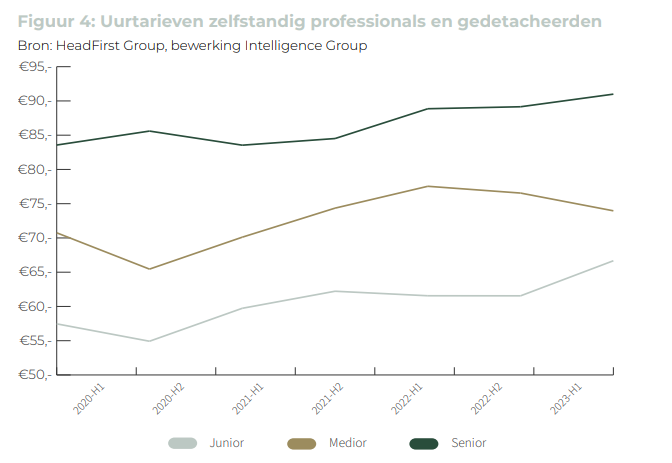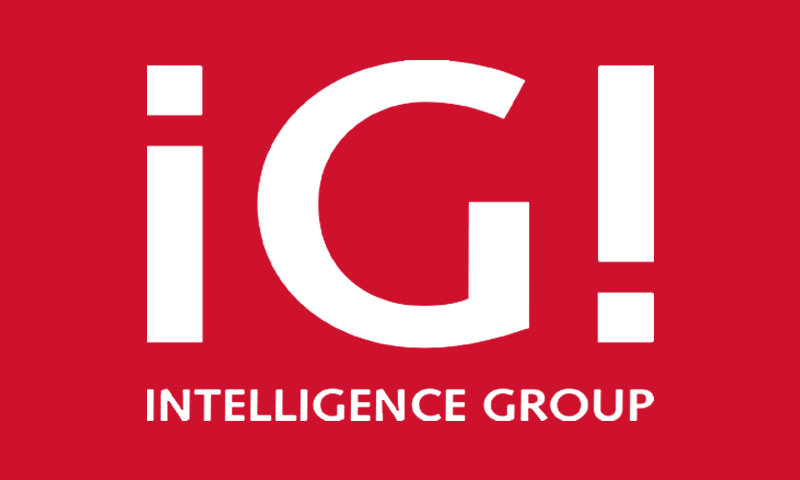The convergence of fixed and flex
In this edition, we take the unique step of comparing rates for permanent and flexible staff, by target group. Which hired professionals are much more expensive than their permanent colleagues? And which ones, on the contrary, are not? An important development towards a full-fledged data model for Total Talent Management.
Tightness in flex market past peak
The scarcity in the labor market - for both permanent and flexible staff - has been severe for years, but in the flex market it seems to have passed its peak. The number of responses from professionals to assignments is rising and the number of assignments without bids is falling. Hourly rates are rising, but lag behind inflation with an average increase of 3.7 percent.

Key findings
- The worst of the tightness seems to be over in the market for highly skilled independent professionals and secondees. The number of offers on assignments is rising and is almost at the level before the corona crisis. The number of assignments without offers is decreasing and moving below 10%. At the same time, we see that labor market activity and sourcing pressure are picking up. All characteristics that "supply" is stirring and is available or coming.
- The number of highly educated independent professionals has increased by nearly 30% in the last five years. This is an explosive increase of about 325,000 people. In addition, over a hundred thousand seconded workers have been added during the same period.
- In the first half of 2023, the rates of highly skilled self-employed professionals and secondment agencies increased by an average of 3.7% compared to the same period in 2022. With this, rates do not follow inflation, self-employed workers lose purchasing power and secondment agencies lose their margin.
- Junior professionals, a group predominantly provided by secondment agencies, became 8.3% more expensive. They are better able to pass on inflation to clients for these juniors, among other things. While clients are actually favoring medior and senior professionals more, due in part to AI innovations, the flattening of the economy and the challenges with Generation Z workers. Nevertheless, in the first part of 2023, mediors took off a "jacket" in terms of rates. This appears to be an offsetting effect from 2022, when an increase of more than 10% was seen. Over two years, this averages out.
- Flexible work has the image of being "expensive. But how much more expensive is flex really? Between the hiring rate and fixed salary (including vacation pay, social and employer expenses) is an average factor between 2.4 and 2.7. As the level of experience increases, the factor increases. In certain very scarce professional groups, such as gardeners or caregivers IG, the factor climbs to almost 4. For psychologists, policy officials and professional groups - where procurement is mostly through SLAs and tenders - the factor is lower to just near or below 2.
Partner

Download Talent Monitor
By downloading the Talent Monitor, you agree that your data will be shared with co-initiator Intelligence Group.
Other reports...
Talent Monitor: Fixed is getting more mobile and flex is getting more sustainable
We compile quarterly - based on recruitment data from...
Talent Monitor: Rate development professionals 2023
We compile quarterly - based on recruitment data from...







